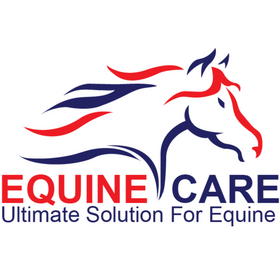
How to Care for Your Farrier Tools to Maximize Longevity
Farrier tools are essential investments for any professional, and ensuring their longevity requires proper care and maintenance. Over time, daily wear and tear, exposure to elements, and improper storage can shorten the life of your tools, leading to reduced efficiency and the need for costly replacements. In this guide, we will walk through practical tips on how to care for your farrier tools to keep them in optimal condition, ensuring they serve you for many years.
Why Proper Tool Care Matters
Farrier tools are designed to withstand tough conditions, but neglecting their care can lead to rust, dull edges, and even damage beyond repair. Keeping your tools in top condition is not just about preserving their physical state—it directly impacts your performance as a farrier. Sharp, well-maintained tools make trimming hooves and shoeing horses more efficient and safe.
By extending the lifespan of your tools through proper maintenance, you also save money in the long run, as high-quality farrier tools can be expensive to replace.
Cleaning Your Tools After Each Use
One of the simplest ways to care for your farrier tools is by cleaning them after every use. Dirt, hoof debris, and moisture can accumulate on the tools, leading to rust and corrosion over time. Here are some cleaning tips:
- Remove debris: After finishing work, use a brush to remove dirt, hoof trimmings, and other debris from your tools.
- Wipe with a damp cloth: Wipe the tools with a clean, slightly damp cloth to remove finer particles and sweat that may have accumulated during use.
- Dry thoroughly: After wiping down the tools, ensure they are completely dry before storage to prevent moisture-related damage.
Cleaning your tools regularly ensures they remain functional and minimizes the risk of rust, especially on cutting edges.
Keeping Tools Sharp
Sharp tools are crucial for efficiency and precision when working on hooves. Dull tools not only make the job harder but also increase the risk of injury to both the farrier and the horse. Here’s how to maintain sharpness:
- Regular Sharpening: Use a file or sharpening stone to sharpen cutting tools like nippers and hoof knives. Keep the edge smooth and free of chips.
- Avoid Overuse: Don’t push your tools to their limit. If they start to dull mid-job, take a moment to sharpen them rather than pushing through, which can cause damage to the tool.
- Sharpen at Correct Angles: Make sure to sharpen tools at the correct angle, as sharpening at an incorrect angle can reduce the lifespan of the edge.
Preventing Rust and Corrosion
Rust is one of the biggest enemies of farrier tools, particularly if you work in humid or wet environments. Preventing rust and corrosion requires regular attention and proper storage:
- Oil Your Tools: Regularly apply a thin layer of oil to the metal parts of your tools. This helps create a barrier against moisture, preventing rust.
- Use a Rust Inhibitor: Consider using a rust inhibitor spray or cloth to protect your tools, especially if they’re stored in a humid environment.
- Store in a Dry Area: Always store your tools in a dry, well-ventilated area. Avoid leaving them exposed to damp conditions.
By maintaining a rust-prevention routine, you can ensure your tools stay in optimal condition for years.
Proper Storage Solutions
Proper storage is often overlooked, but it’s a critical part of caring for farrier tools. Investing in the right storage system protects your tools from unnecessary damage and keeps them organized for easy access.
- Toolboxes and Cases: Use a sturdy, waterproof toolbox or case to store your tools when not in use. This prevents moisture exposure and protects the tools from accidental damage.
- Hang Tools Properly: For larger tools like hammers and rasps, consider hanging them on a pegboard or dedicated tool rack to prevent them from lying in potentially damp or dirty conditions.
- Keep Tools Separated: Avoid stacking tools on top of each other as this can cause damage to edges and surfaces. Use dividers or protective coverings to keep them organized and safe from abrasion.
Regular Tool Inspections
Inspecting your tools regularly helps catch any early signs of wear and tear that could lead to more significant issues down the line. During inspections, look for:
- Loose handles or screws: If any parts are coming loose, repair or replace them to avoid further damage.
- Cracks or chips: Check the edges of cutting tools for chips, and inspect the surface for any cracks. Damaged tools should be repaired or replaced to maintain safety and functionality.
- Rust spots: If you spot any small areas of rust, address them immediately by removing the rust and applying oil to prevent further corrosion.
Frequent inspections help you stay on top of minor issues before they become costly repairs or replacements.
Replacing Worn Parts
While proper care can significantly extend the life of your farrier tools, parts of the tools will inevitably wear out over time. Knowing when to replace worn-out parts is essential for ensuring safe and effective work.
- Replace Handles: Wooden tool handles may crack or splinter over time. Replace them as needed to maintain comfort and safety during use.
- Replace Blades: If a cutting tool has become too worn down, even with regular sharpening, it’s best to replace the blade or the entire tool if necessary.
Timely replacements ensure your tools perform as expected and reduce the risk of injury.
Conclusion
Farrier tools are indispensable assets, and with proper care, you can maximize their longevity and effectiveness. Regular cleaning, sharpening, rust prevention, proper storage, and timely part replacements will ensure your tools remain reliable for years. By following these care tips, you can avoid costly replacements and keep performing at your best as a farrier.
